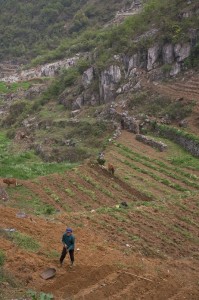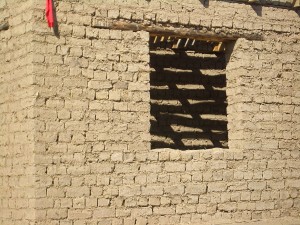By Michael Tan, Claire Mathon and Tommy Hauver
After the catastrophic Cultural Revolution eventually ended in 1976, China began to regain its vitality under the lead of the new government. Chinese economy has been growing at tremendous pace each year ever since the reforming and opening up policies were established in 1978. It is obvious that this development in economy has resulted in the mass urbanization in rural areas. The villages have been so much better off due to changing the type of economy in order to fit in the new lifestyle in more urbanized areas.
The ancient village of Fenghuang is one of the villages that benefited the most from urbanization. The urbanization took place in 2001, where the local authority decided to make good use of its splendid views to turn it into a tourism-specified city. This process was extremely successful, where the annual number of tourists increased from 576,000 to 4,859,500 in 2009, and annual income from tourism increased from 74,000,000 yuan (about 12,333,333 dollars) to 2,609,000,000 yuan (about 434,833,333 dollars). (Zhou, 2011) These dramatic data definitely reveals the great benefits of urbanization; however, urbanization is also causing potential problems to the urbanized area.

The ancient town of Fenghuang https://www.flickr.com/photos/freecu/5591385449/
Behind the gigantic economic growth in Fenghuang, newly emerged problems draws a shade over the bright future of this city. Traditional landscape was the worst drawbacks of urbanization. As the number of tourists increased by a great amount, more and more souvenir shops were set up, which took over numerous ancient folk houses. Meanwhile, more and more contacts between Fenghuang and more developed cities caused some traditional customs and productions to disappear due to the new and more urbanized lifestyle. (Zhou, 2011)
In Fenghuang, urbanization seems to have more drawbacks in the long term than the benefits in the short term because of its harm to the culture itself. So should urbanization be strictly controlled in order to maintain the social welfare? In contrast, the transition in Xizhou, Yunnan is much milder and more sustainable. Xizhou is a village which was ruled by the Bai ethnic minority group, which was known for its handcraftsmanship and tourism. Unlike urbanization that took place in Fenghuang, the transition to a more industrialized society in Xizhou successfully transformed from an agricultural oriented village to a business oriented city. At the same time, its unique culture was enforced, which credited the Bai people’s accurately realizing the tourists’ need and quickly adapt the new style of production within their traditional production (Yang, 2012). This makes Xizhou a good example of a village undergoing urbanization in China.

Girls in traditional Bai costume. https://www.flickr.com/photos/fangyang/4368030626/
If urbanization makes progress under its capability, instead of blindly pursuing economic achievement, it will bring the maximized benefit to the nation and will strengthen the culture and unique tradition of the villages it is affecting.
Continue reading “Urbanization of Chinese Villages After Cultural Revolution”


